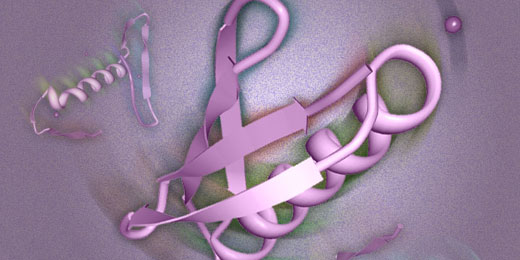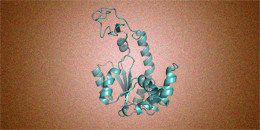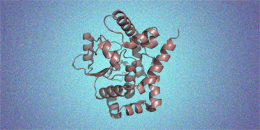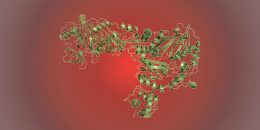

Chemical Dynamics of Single Proteins: The operational principles of molecular machines
Proteins are remarkable molecular machines capable of carrying out a wide array of biochemical transformations and biological functions. More often than not, a protein changes its structural configuration to achieve the designated tasks. The central physical chemistry problem is to be able to quantitatively predict the manner by which a protein changes its conformation under the stochastic sway of solvent molecules. We are developing and applying single-molecule tools to address this problem.

Adenylate Kinase (AK): Conformational gating and dynamically induced fit
Adenylate kinase is an ubiquitous enzyme that maintains the energy balance in cells. It has been one of the prototypical model system for studying protein dynamics. Conformational gating and dynamically induced fit are two operational principles observed from our single-molecule experiments. We are currently studying how point mutations may alter the conformational dynamics.
Links: Proc. Natl. Acad. Sci. USA, 104, 18055-18060 (2007); J. Biol. Chem., 284, 3306-3313 (2009).
Protein Tyrosine Phosphatase B (PtpB): Local folding/unfolding and single-molecule compound logic
Protein Tyrosine Phosphatase B from Mycobacterium tuberculosis is a protein that has been implicated in the virulence of tuberculosis. Our single-molecule study revealed that the large-amplitude conformational movements protect the active site from being oxidized and at the same time allow its interactions with substrates. More generally, our work provides the first experimental evidence that local folding / unfolding directly impacts on the kinetics of conformational changes, and has direct implications in how it might be utilized by M. tuberculosis to perform compound logic operations in manipulating host-cell signaling networks.
Links: J. Am. Chem. Soc., 132, 4772-4780 (2010); J. Am. Chem. Soc., 140, 14747–14752 (2018).
Non-Ribosomal Peptide Synthetases (NRPS): Conformation coordinations in multi-module mega enzymes
Nonribosomal peptide synthetases are multi-module enzyme templates for the synthesis of bioactive peptides. Large-scale conformational changes occur during peptide assembly, and work we have done has revealed more detail about the dynamics of these conformational changes and how they couple to sequential catalysis. With this we were able to propose an expanded model of conformational changes in the NRPS cascade biosynthesis.
Links: Biochemistry, 54, 7983-7989 (2014); Nat. Chem. Biol., 13, 1009-1015(2017); RSC Chem. Biol., 2, 843-854 (2021); Nat. Chem., 16, 259-268 (2024).Updated: 2024.02.22.














